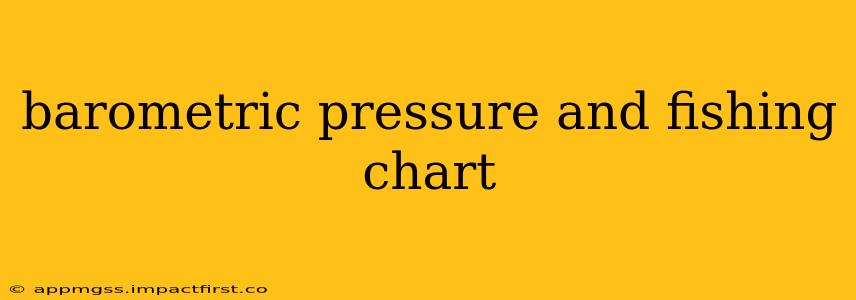Understanding the relationship between barometric pressure and fishing success is crucial for any angler looking to maximize their catch. While not a foolproof predictor, changes in atmospheric pressure significantly influence fish behavior, impacting their feeding patterns and activity levels. This guide delves into the intricacies of barometric pressure, its effect on fish, and how to effectively use barometric pressure charts to improve your fishing game.
What is Barometric Pressure?
Barometric pressure, or atmospheric pressure, refers to the weight of the air pressing down on the Earth's surface. It's measured in inches of mercury (inHg) or millibars (mb). High pressure systems generally bring clear, sunny skies and stable weather, while low-pressure systems often result in cloudy, rainy, or stormy conditions. These pressure changes significantly affect water conditions and, consequently, fish behavior.
How Does Barometric Pressure Affect Fish?
Fish, being highly sensitive to their environment, react to changes in barometric pressure. These reactions are often subtle but can drastically alter their feeding habits and overall activity.
-
High Pressure: Generally considered favorable for fishing, high pressure often leads to calm, clear water conditions. Fish tend to be more active and readily feed during periods of stable, high pressure.
-
Low Pressure: Low pressure systems usually bring unstable weather, often causing cloudy skies, rain, and changes in water temperature and oxygen levels. These changes can make fish less active and less inclined to feed. However, there can be exceptions, particularly just before a storm front arrives, when fish can exhibit a surge in feeding activity.
-
Falling Pressure: The period when barometric pressure is dropping is often considered the most crucial for anglers. As pressure falls, it can trigger a rush of feeding activity in many fish species as they anticipate a change in weather and water conditions. This is a prime time to fish.
-
Rising Pressure: As pressure rises after a storm or low-pressure system, fish often become less active, and feeding activity may decrease.
What is a Barometric Pressure Chart and How Can I Use It?
Barometric pressure charts, readily available online and through weather apps, provide forecasts of atmospheric pressure over time. These charts typically show pressure trends graphically, allowing anglers to visualize the pressure changes and predict fish behavior.
Using a barometric pressure chart effectively involves:
-
Understanding the Trend: Look for the overall direction of the pressure change (rising, falling, or stable). A falling pressure trend is generally considered more favorable for fishing, while a rising trend suggests less active fish.
-
Identifying Key Pressure Levels: Some anglers pay attention to specific pressure levels (e.g., above 30.2 inHg, below 29.8 inHg) as thresholds for increased or decreased fishing activity. However, it's more important to focus on the trend rather than specific numerical values.
-
Considering Other Factors: Remember that barometric pressure is just one factor influencing fish behavior. Other factors like water temperature, time of day, and moon phase should also be considered.
-
Experiment and Observe: The best way to learn how barometric pressure affects fish in your specific area is through personal experience. Keep a log of your fishing trips, noting the barometric pressure and your results to identify patterns.
What are the Best Times to Fish Based on Barometric Pressure?
Generally, the best time to fish is when the barometric pressure is stable and either high or falling. The period immediately before a storm front passes can sometimes be exceptionally productive. However, during periods of rapidly falling pressure and particularly intense storms, fishing success can be significantly reduced.
Do all Fish Respond the Same Way to Barometric Pressure Changes?
No, different fish species respond to barometric pressure changes differently. Some are more sensitive than others. Furthermore, fish behavior can also be affected by their size, location, and prey availability. Therefore, observing trends for specific species in your area is essential.
How Accurate are Barometric Pressure Charts for Predicting Fishing Success?
Barometric pressure charts provide valuable insights into potential fishing conditions, but they're not foolproof. Other factors significantly influence fish behavior, making it impossible to guarantee success solely based on pressure readings. Consider them a helpful tool, not a definitive guide.
Conclusion
By understanding the relationship between barometric pressure and fish behavior and skillfully utilizing barometric pressure charts, anglers can significantly increase their chances of a successful fishing trip. Remember to always combine your understanding of pressure trends with other relevant factors to refine your fishing strategy and maximize your time on the water.
